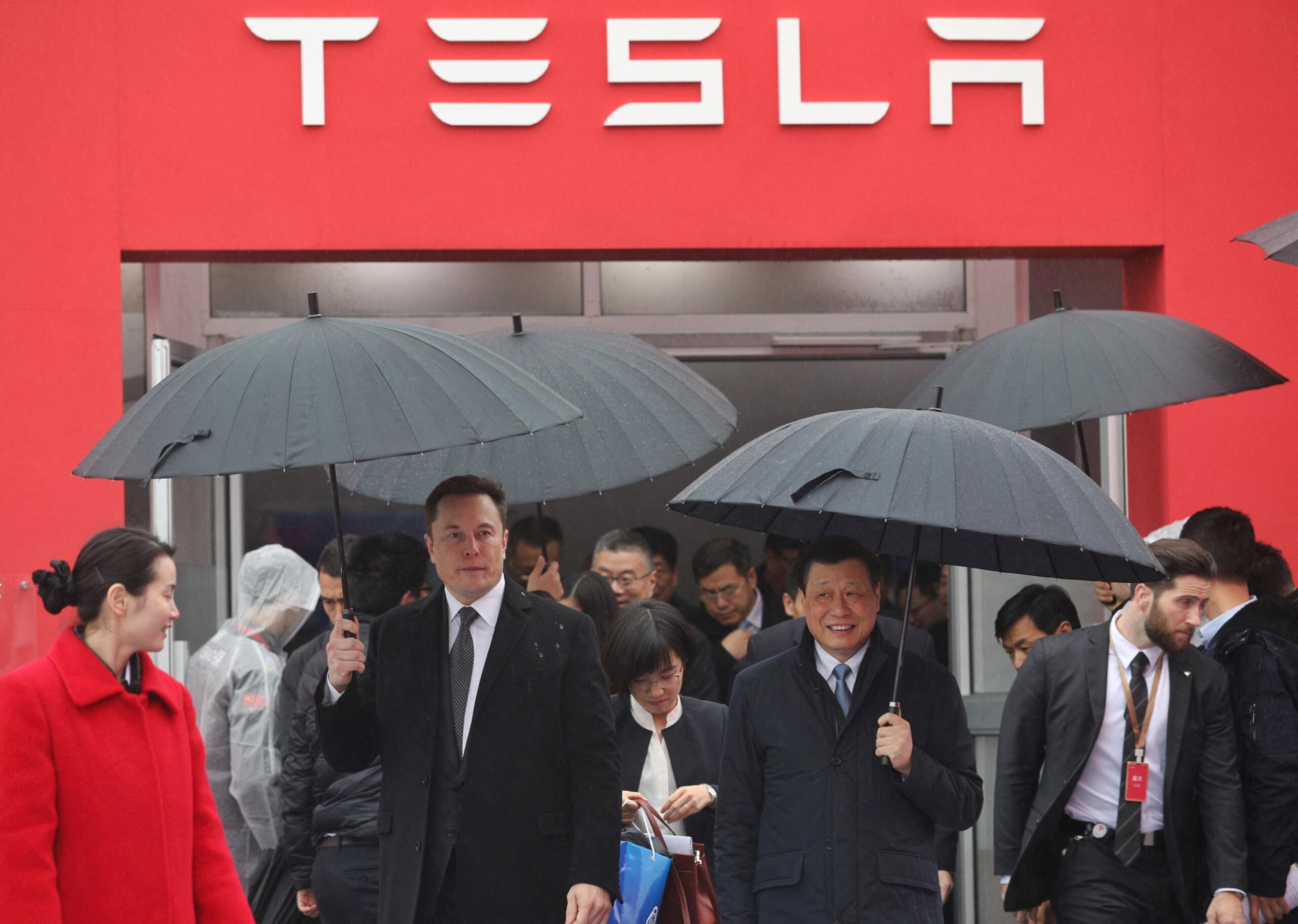- Tesla sales decline globally amid Elon Musk’s politics and competition from local rivals.
- Electric vehicle pioneer sees market share erosion in Europe, China, and Australia.
Tesla is designing a cheaper Model Y and enhancing its autonomous-driving capabilities in China as it scrambles to reverse a worldwide sales slide.
The Tesla sales decline has become a challenge for the electric vehicle maker. To combat plummeting market share, the new Model Y variant is planned to be 20% cheaper than existing models.
Once the undisputed leader in the global EV market, Tesla is grappling with consumer backlash against CEO Elon Musk’s political association with the Trump administration and increasingly fierce competition from local rivals in key markets. According to the South China Morning Post, the company’s market share in China has dropped dramatically from more than 16% in 2022 to just 4.3% in February 2025.
Stock market response
The impact has been felt on Wall Street, where Tesla’s stock dropped 15% on Monday, marking its steepest decline in five years. According to TIME, the drop came alongside a stock market plunge following President Donald Trump’s hint at a recession. The president acknowledged Tesla’s struggles in a post on Truth Social, where he blamed “radical left lunatics” for boycotting Musk’s EV company and pledged to “buy a brand new Tesla” himself.
European market struggles
The decline in Tesla sales is particularly pronounced in Europe. According to the European Automobile Manufacturers’ Association (ACEA), Tesla sold just under 7,517 vehicles in Europe in January, half of January 2024 sales. The decline comes despite the rise of overall battery and hybrid electric vehicle sales as the European Union (EU) continues to tighten regulations on emissions from new vehicles.
In February, electric vehicle sales in Germany, the largest market for EVs in the EU, rose 30% year over year, yet Tesla sales were down more than 70% compared to last year. TIME reports that less than 1,500 new Teslas were registered in Germany in February.
Other European countries have also witnessed Tesla’s market share erode. Between January and February of 2025, Tesla recorded a 50% drop in sales in Portugal and 45% in France, according to Reuters, while sales fell 42% in Sweden and by 48% in Norway.
Australian and Chinese markets
The Tesla sales decline includes Australia, where data from the Electric Vehicle Council shows that Tesla sales dropped over 70% compared to last year, with just 1,592 sales in February compared to 5,665 in February 2024, as reported by The Guardian.
In China, Tesla is facing particular challenges. Tesla sales in China dropped 49% in February, with the automaker shipping 30,688 vehicles – the lowest monthly figure since July 2022, according to Bloomberg. Tesla’s market share in the country has plummeted from more than 16% in 2022 to just 4.3% in February 2025, as reported by the South China Morning Post.
Chinese automaker BYD has emerged as a formidable competitor, selling more than 318,000 electric and hybrid cars last month – a 161% increase from last year. In December, sales of Tesla’s Model 3 fell behind those of the SU7, developed by smartphone vendor Xiaomi, by 25,815 to 21,046.
US market challenges & the bright spots amid global decline
Even in Tesla’s home market, the company is facing headwinds. In California – the biggest domestic market for EVs thanks to its state mandate that 35% of new 2026 car models sold must be zero-emissions – Tesla sales slumped for the fifth consecutive quarter, according to data from the California New Car Dealers Association (CNCDA).
However, not every market has seen a similar decline. Britain saw a record number of EV sales in 2024, and Tesla sales were up 20% in February, bucking the global trend.
Musk’s response to global challenges
When Fox Business’s Larry Kudlow asked Musk how he was managing his various businesses amid these challenges, Musk candidly admitted he was doing so “with great difficulty.” Tesla has not officially released a statement addressing its falling sales, but its actions in various markets speak of the company’s recognition of the severity of the situation.
Competition intensifies as price war unfolds
Mainland China is Tesla’s second-largest market worldwide, trailing only the US, and the Shanghai factory is the carmaker’s most extensive production base. However, the company faces increasingly sophisticated competition from local manufacturers offering comparable or superior technology at significantly lower prices. An entry-level edition of Xpeng’s Mona M03, an EV fitted with preliminary autonomous-driving technology, costs 119,800 yuan, just half the price of the Model 3.
The price disparity illustrates the fundamental challenge Tesla faces in markets like China, where domestic manufacturers have rapidly closed the technological gap while maintaining a substantial cost advantage. Chinese brands also employ aggressive pricing strategies that Tesla has struggled to match. According to China Passenger Car Association data, a record 227 models, including electric and petrol cars, had their prices cut in 2024, compared with 148 in 2023. The price war puts additional pressure on Tesla’s margins when the company is already contending with declining sales volumes.
The road ahead: Critical challenges mount
The decline in Tesla sales represents a pivotal moment for the company that once dominated the EV landscape. While Tesla is taking steps to address its challenges – particularly in China with its new lower-priced Model Y and enhanced autonomous capabilities – these moves may be too little, too late as competitors continue to gain momentum.
Tesla’s production problems compound its market challenges. Even as the company unveiled an upgraded Model Y in China in late February, buyers in Shanghai are still waiting for deliveries due to production shortages, according to the South China Morning Post. These operational issues further erode consumer confidence at an important juncture. The reality facing Tesla is stark: its first-mover advantage has largely evaporated, and the company now finds itself in unfamiliar territory – playing defence rather than setting the agenda for the industry.
With EV adoption accelerating globally and Tesla’s share of the growing market shrinking, the company faces existential questions about its positioning and strategy. For a company whose stratospheric valuation was predicated on market dominance and industry leadership, this period of retrenchment signals a fundamental recalibration of Tesla’s prospects.
Whether Musk’s company can regain its footing in an increasingly crowded landscape remains today’s a pressing question in the electric vehicle industry.








